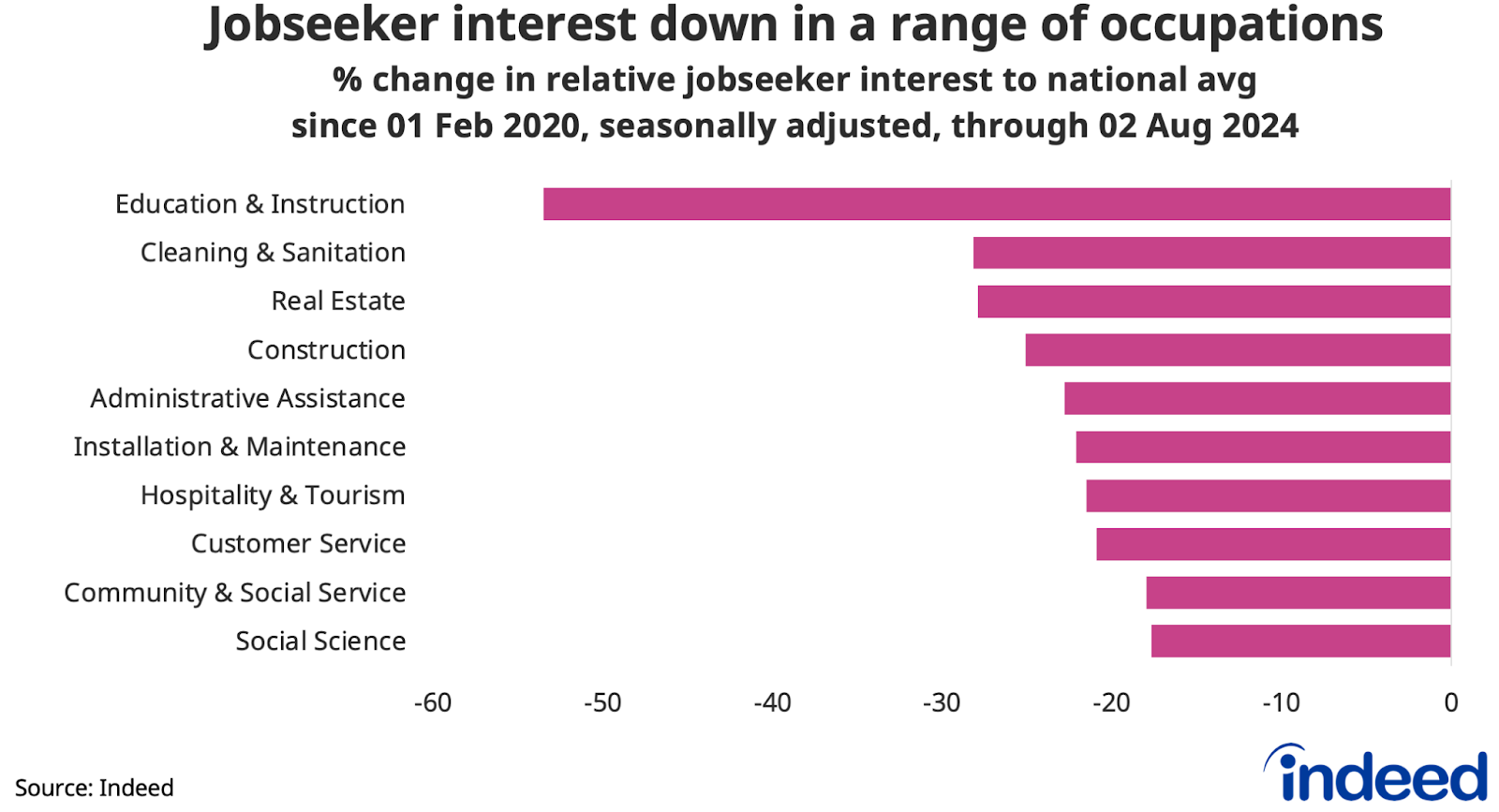The latest figures underline the mountain the new government has to climb in tackling economic inactivity. Though the labour market has cooled, it remains fairly tight with 1.6 unemployed people per vacancy, below the average of 2.9 over the past two decades. Vacancies are still challenging to fill in a number of pockets and near-record working age inactivity at 9.4 million continues to be a key factor behind this — meaning the Labour government has their work cut out for them.
Though wage pressures are gradually easing, the disinflation remains gradual with regular pay growth still running at 5.4% year-on-year. This may limit the amount of monetary easing the Bank of England is able to deliver over the coming months, potentially putting a brake on growth.
Indeed data shows that jobseeker interest has fallen in recent years in several sectors which are in focus for the government. Education & instruction have seen the biggest drop in interest, while construction and installation & maintenance have also seen among the largest declines. Recruitment and retention challenges in these occupations pose a threat to ambitious plans in areas such as teacher recruitment (despite the recent 5.5% pay deal), ramping up housebuilding and speeding the net zero transition.







